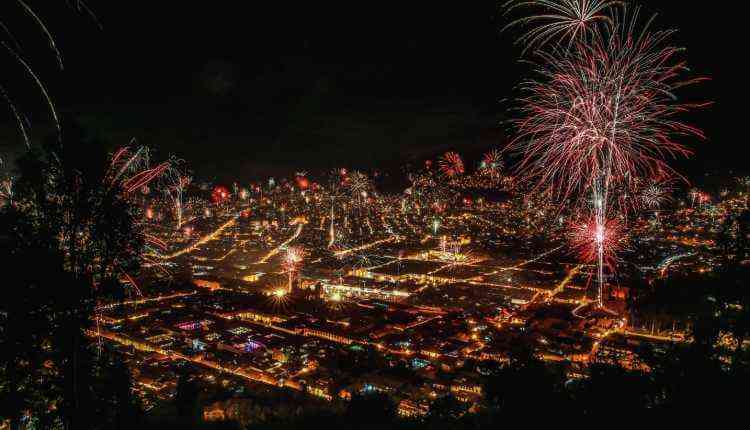We all know that India is a very spiritual country, that is why its sacred celebrations are so important in the lives of all its inhabitants. There are many religious and historical festivals throughout the year and in all regions, so why not combine our trip with these colorful festivals to discover the soul of this culture.
The 15 Most famous religious and nonreligious events celebrated in India are:
1. Republic Day
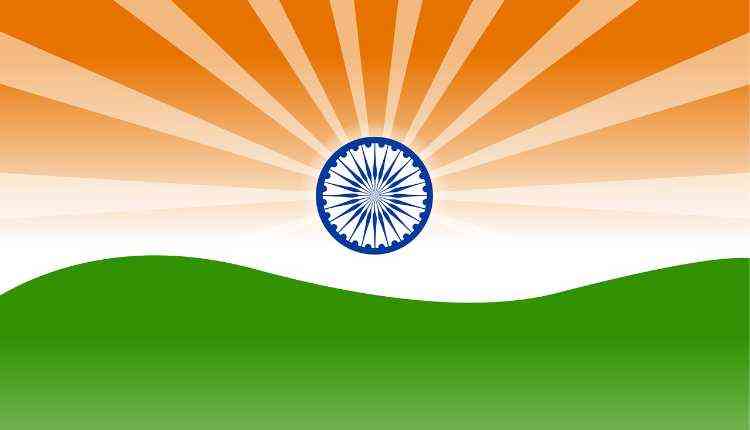
After January 26, 1950, Rajendra Prasad elected as President of India. This means that the Indian Constitution became effective from this day.
The Constitution of India is, with 448 articles, the longest in the world and the first to be adopted by a non-western country. With enactment, the state gained its independence, which came into force after centuries of British rule. The Constitution replaced colonial laws, and India definitively broke with the monarchy to become a republic.
To establish the importance of this occasion, every year a grand parade takes place in the capital, New Delhi, from Raisina Hill near the Rashtrapati Bhavan (Presidential Palace), along the Rajpath, passing through the Indian Gate, and continuing towards the historic Red Fort. The different regiments of the Navy, Army, and Air Force March with their most exceptional official decoration. The President of India, who is the Commander-in-Chief of the Indian Armed Forces, greets them. The parade also includes live demonstrations and traditionally ends with an Indian Air Force jet flyby. Also, read Republic Day Special: Know our special relation with 10 ASEAN countries.
2. Holi
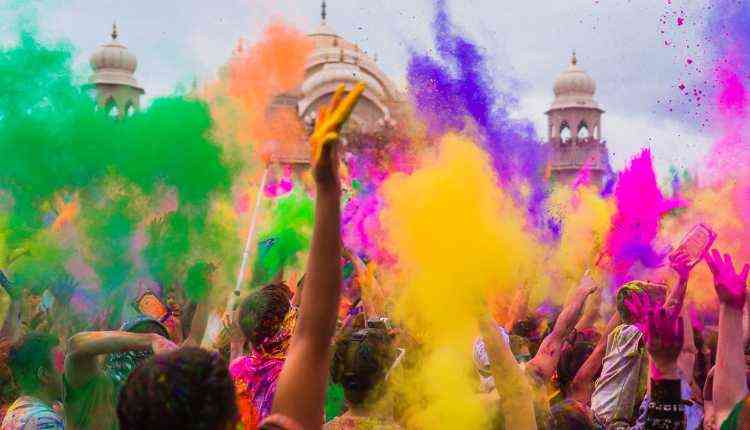
Holi traditionally celebrates the victory of good over evil and abounds until spring.
It is also known as the “Festival of Colors” because, as a tradition, everyone throws colored powders and water while enjoying singing and dancing. A massive fire is also made to burn dry leaves, symbolizing the end of winter.
This celebration also comes from an ancient legend. King Hiranyakashipu is said to have been blinded by power when he was crowned and wanted to be the only one respected in his territory: Above the gods. His son, Prince Prahlada, refused and continued to worship Vishnu. His aunt, Holika (that’s where Holi comes from), decided that the only solution was to burn the prince alive by preparing a trap for him. She asked her to sit next to her (wearing a fireproof cover) on a cremation pile. The pile began to burn, and the cover mysteriously settled on the prince. While Holika was burned to death, Vishnu appeared to destroy the king.
It is an ideal time to participate, have fun, and feel part of this culture.
3. Christmas, Especially in Goa

Christmas celebrations in India have transcended religions and have become an integral part of many Indian families in their own unique way. Christmas in the state of Goa in western India is celebrated with great enthusiasm. There are more than 400 churches, and some of the most popular is the Basilica of Bom Jesus and the Church of the Immaculate Conception.
Christmas dishes, along with typical Goan foods, are a delight for all tourists who visit the place at this time of year. When you go on vacation to Goa, you should not miss the famous Anjuna trail, which opens every Wednesday. The trail lights up before Christmas and those interested bargains for the best deals. These can choose from a plethora of local crafts, spices, clothing, footwear, beachwear, artificial jewelry, and accessories as the perfect Christmas gift.
Another tradition is that the locals have practiced for years and are burning the effigies of an older man to signify the destruction of the worries and the ills of the previous year. Goa is famous for its beaches and beautifies itself on Christmas Eve when fireworks light up the sky. The fireworks on the Baga and Calangute beaches are a visual delight.
You might also be interested in the 10 Biggest and popular Churches in India.
4. Maha Kumbh Mela
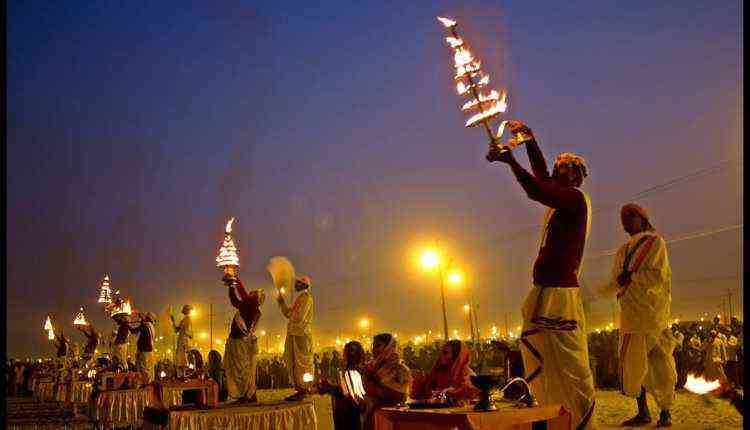
According to Sanatan Dharma, Kumba Mela is the largest religious event in the world recorded in India. The story of Cumbus is 850 years old. It is said that Adi Sankaracharya had started this fair. Some people think that this started with sea thunder since time immemorial. The word Kumbha is used for Ghat, Kalasha, or a vessel filled with water. But in Indian culture, the symbol of Kumbh Swastik is full of water, with Akshat Durva symbols, coconuts, mangoes, granular leaves, from mythological times to the present, the worship of these jars and the worship of the earth are everywhere.
The Kumbh Mela has a mythological backdrop. According to the Puranas, thousands of years ago, Gods and demons began the “Samudra Manthan,” the churning of the ocean, which was thought to be eternal wealth. One of the 14 gems found in the ocean was “Amrit,” i.e., Nectar. The sip of this precious nectar was enough to make a person immortal. Therefore both gods and demons learned about this. It happened after when the god Dhanvantari carrying the jug with such a precious ingredient emerged from the sea of milk, the demons stole it and fled with it. The gods persecuted them for 12 days and 12 nights (equivalent to 12 human years). During this persecution, they spilled drops in the four cities [Hardwar (Har ki Pauri), Allahabad (Prayag), Nashik (Godavari Ghat), and Ujjain (Shipra Ghat)] where the Kumbh Mela is celebrated.
The date of celebration of the Kumbh Mela varies depending on the lunar calendar and the city in which it is celebrated.
5. Diwali
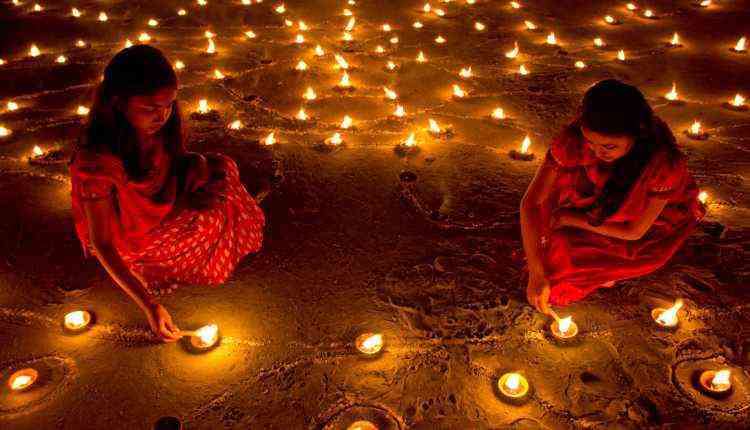
Even though Diwali is celebrated in all states of the subcontinent, a unique variation takes region in Varanasi, Uttar Pradesh. The pageant of lights, which celebrates Lord Rama’s go back to Ayodhya after a 14-year exile after defeating Ravana and rescuing Sita, also marks the victory of truth over evil.
There are five days of celebrations, but the high point comes on the night of the fifth day when people go outside to celebrate Diwali with firecrackers. This night, there is an authentic festival of light and color. During these days, people dress up new clothes, the houses are decorated, and sweets are shared.
Dev Deepavali (Diwali of the Gods) is celebrated on the full moon day of the Hindu month of Kartika (between November and December) and takes place 15 days after Diwali. The steps of all the ghats (river banks) in the holy river Ganges, from Ravidas Ghat in the extreme south to Rajghat on the outskirts of the city is illuminated with more than a million ideas (ground lamps) in honor of the river and its main goddess. It is believed that, on this day, the gods descend to Earth to bathe in the Ganges.
During this festival, the houses enchant with their cleanliness and decoration along with oil lamps and rangolis (traditional motifs made on the ground with materials such as painted rice, dry flour, colored sand, or flower petals). At night, people start fireworks, and oil lamps float on the river. At this time, the procession of decorated Hindu deities is held in the streets.
6. Pongal
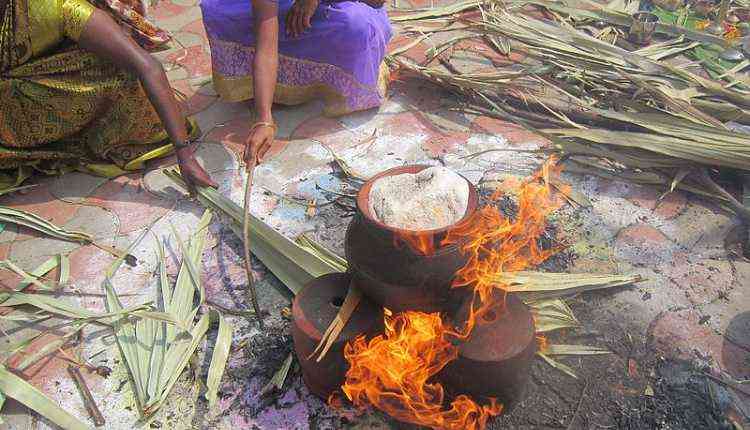
In Tamil Nadu, the monsoon festival is celebrated named Pongal. This festival is celebrated for four days and corresponds to an exploit of the god Krishna. The blue-faced god is said to have protected the villagers of Brindavan from the wrath of Indra, the storm god. Each day of the festival has a different name.
- Day 1: Bhogi- It’s the day of old fabrics. Old clothes are burned and thrown away to mark the start of a new life.
- Day 2: Pongal- During this day, there is a ritual ceremony of sun offerings to thank the crops. During this day, we eat the Pongal, a dish made from milk and rice.
- Day 3: It’s a Mattu Pongal- This is the day when we honor cows and buffaloes by putting a garland, kumkum (a mark on the forehead), and bringing them better food than usual.
- Day 4: Kaanum Pongal- On this last day, the inhabitants eat sugar canes and decorate their houses by performing Kolams (geometric drawings on the ground or Rangoli).
7. Independence Day
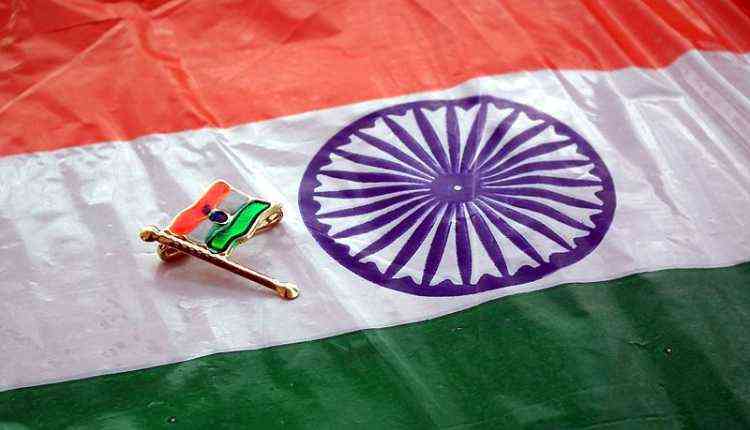
National Day August 15, which commemorates the country’s independence since 1947, excels in all castes, beliefs, and religions. All Indians celebrate it with as much enthusiasm. For this, Indians had to sacrifice a lot and had to struggle a long time. Thousands of freedom fighters like Mahatma Gandhi, Bhagat Singh, Netaji Subhash Chandra Bose, Sardar Vallabhbhai Patel, Dr. Rajendra Prasad, Maulana Abul Kalam Azad, Sukhdev, Gopal Krishna Gokhale, Lala Lajpat Rai, Lokmanya Balagangadhar Tilak, Chandra Shekhar Azad sacrificed. The freedom fighters worked hard for the independence of the country. They united day and night in fighting British rule.
On the occasion of Independence Day, big programs are organized at the government level. The big event takes place at the Red Fort. There the Prime Minister of the country hoists the flag and addresses the country from the ramparts of the Red Fort. Some people get ready in the morning and listen to the speech of the Prime Minister of India on TV. After that, many other events are organized. The national flag is given a 21-gun salute. Similarly, Independence Day celebrations are also held in every state where the Governor and Chief Minister of the state attend the Chief Guest.
Every citizen of the country celebrates Independence Day in their own way. On this occasion, they decorate the venue, hoist the national flag, and sing national songs or patriotic songs. Various programs are organized in schools on this occasion.
8. Pushkar Camel Fair
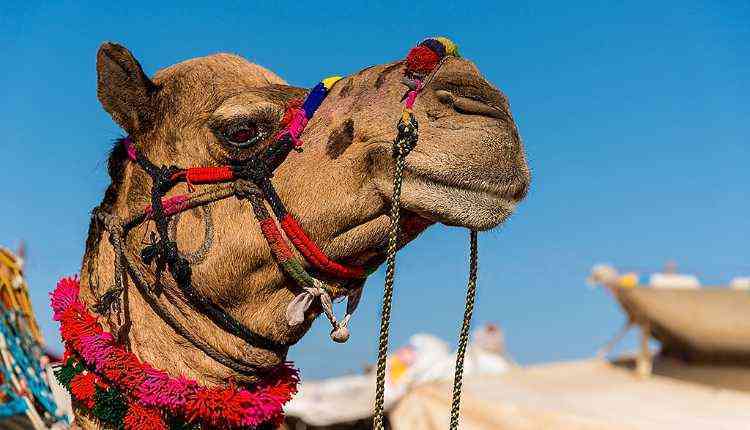
The holy city of Pushkar hosts the largest camel fair in the world. Each year in November, between 4000 to 6000, camel dealers meet to sell or buy new camels. This fair is not only limited to the sale- but has room for many other events, such as races, beauty pageants, sale of other livestock, etc. Religious ceremonies also take place as part of the festival, including swimming in the sacred Pushkar Lake. It’s a festive and impressive event that brings together many tourists from around the world.
9. Ratha Yatra

This remarkable Odisha chariot festival is a 5,000-year-old festival that has its roots in spirituality. Traditionally, the Ratha Yatra is a Hindu festival that revolves around the worship of Lord Jagannath (a reincarnated form of Lord Vishnu, the Hindu god of preservation). The Ratha Yatra procession, which takes place in the eastern city of Puri in Odisha, is considered to be the oldest, of which mentions can be found in ancient scriptures and relics. The festival commemorates Jagannath’s annual visit to the Gundicha Temple through the Mausi Maa Temple, believed to be the home of the lord’s aunt, near Balagandi Chaka, Puri.
As part of the Ratha Yatra, the idols of Jagannath, their older brother Balabhadra, and younger sister Subhadra, are taken out in three beautifully adorned chariots, which remain there for nine days, in procession to the Gundicha Temple. The Ulto Ratha, which is the return of the chariot, begins after the stay when the Ratha (chariots) returns to the main temple.
According to the Katha Upanishad (an ancient Indian Sanskrit script), the spiritual meaning of this festival lies in the thought that the human body is similar to a ratha and that God drives it as a sarathi (chariot driver). Ayan Parida, a resident of Puri, explains: “A trip to Puri during Ratha Yatra is considered sacred, and many devotees from all over the world gather to undertake the pilgrimage. What many do not know is that each of the chariots of the three deities is different from the others, since they are built with wood every year. Lord Jagannath’s chariot is called Nandighosa. Balarama’s chariot is called Taladhwaja and is identified because it is the one with the palm tree on its flag, and Subhadra’s chariot is known as Dwarpadalana.”
At the start of the Ratha Yatra, cars covered in glittering awnings made from strips of red cloth in shades of black, yellow, and blue line the length of the wide avenue in front of the majestic main temple near the eastern entrance, which is also known like Sinhadwara or the Lion’s Gate.
10. Dussehra

Dussehra is a festival that closely follows Durga Puja in terms of story and celebrates the victory of the goddess Chamundeshwari (a form of Durga) over the demon Mahishasura.
The Mysore Dussehra, which takes place in the state of Karnataka in southern India, differs from the celebrations that take place in other states due to its cultural references and rituals. Also known as Nadahabba, it is the state festival and takes place over 10 days, beginning with the Navaratri (Navaratri means nine nights), the last day being the Vijayadashami.
The festival is celebrated on the tenth day of the Hindu Ashvin calendar month, which usually falls in the Gregorian months of September and October. Mysore’s name is believed to come from Mahishasura, the slain demon. Local tradition celebrates the warriors and the state cause of struggle for good during this festival, worshiping them in rites, and displaying the state sword, weapons, elephants, and horses alongside the deities of the goddess in her warrior form and reincarnation, from Vishnu, Rama.
Extensive ceremonies and famous processions are held in which people gather to observe the victory of good over evil. The Mysore Palace is illuminated daily with almost 100,000 light bulbs during all the days of the festival. It is the center of attraction, where various cultural presentations are made for the public.
11. Durga Puja / Navratra

Durga Puja is an Indian festival that occurs annually and is dedicated to the worship of the goddess Durga. Being a Hindu festival, the Durga Puja celebrations resemble a weeklong carnival, which is observed in different parts of the country, especially in West Bengal, eastern India. Kolkata, the center of the celebration, boasts of themed pujas (ritual worship of the gods), where artistic decorations adorn the numerous pujas pandals (marquee), and each has something unique to offer to devoted visitors.
The celebrations have their heyday in the last five days, which are known as Shasti (sixth day), Saptami (seventh day), Ashtami (eighth day), and Navami (ninth day). On Dashami (tenth day), statues of Durga are immersed in water, and this is the time when people say goodbye to the Goddess. This is done after the carnival, which showcases the best idols in the country, especially in Calcutta, before they are taken into the water.
Today, Durga Puja is celebrated all over the country, which is also slowly reaching foreign lands.
12. Bihu, Assam
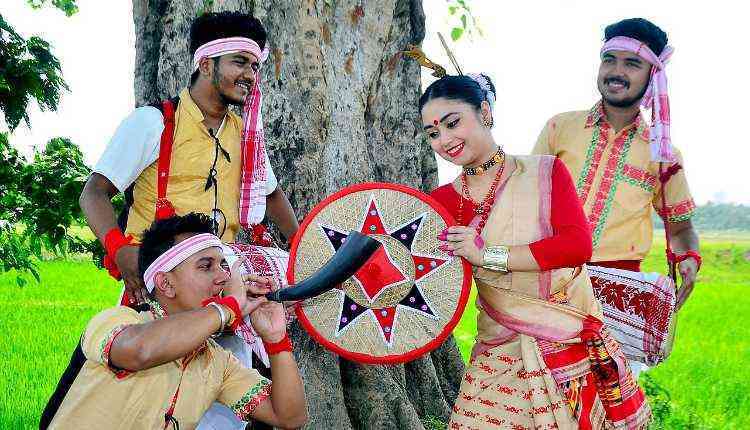
The memorable Assam festival, the Bihu, focuses on harvesting activities, according to the agrarian calendar of the north-eastern state. The Bihu festival is celebrated in three different months, each with its own meaning. The origin of the word Bihu is said to derive from the Sanskrit word bishu, where bi means asking, and shu means peace and prosperity. The name Bihu also derives from the Dimasa community.
The Bihu festival website explains: “Bihu, in addition to being a primary identity for Assam, is also a harvest festival. The first Bihu, known as the Bohag Bihu or Rongali Bihu, is celebrated for seven days. It marks the beginning of spring, and farmers prepare the field for cultivation. There is a general festive air in Assam’s atmosphere. The day is also considered the first day of the Assamese New Year.
The next Bihu is known as Kati Bihu and is a more subdued one that is mainly celebrated to seek the gods to bless the crops. The last Bihu is known as Magh Bihu and marks the end of the harvest season. In the Magh Bihu, the goal is to party and celebrate as the barns are full, and farmers no longer have to worry about their crops. The Magh Bihu is celebrated by almost all Assamese families from different parts of the world.
13. Ganesh Chaturthi
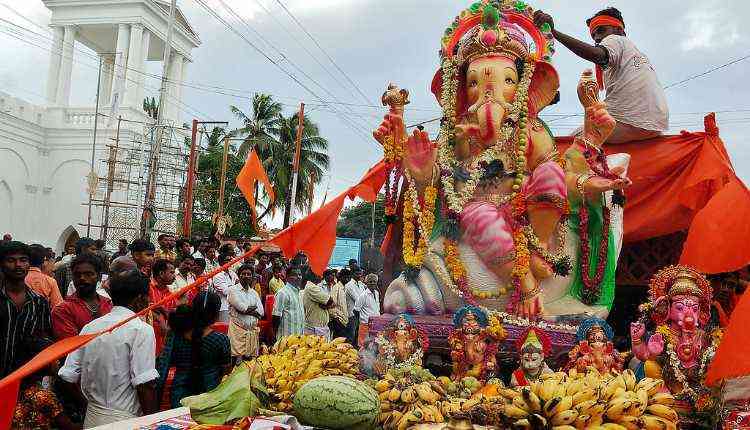
Also known as Vinayaka Chaturthi, the festival celebrates the return home of the Hindu deity Lord Ganesh when he leaves Mount Kailasha (his abode) and enters the houses of mortals to announce blessings, happiness, and prosperity. This festival is very famous in the western Indian state of Maharashtra. With a duration of ten days, it begins the fourth day of the Hindu lunisolar month Bhadrapada, which usually coincides with the Gregorian months of August or September. The festival is marked by the private installation of Ganesh’s clay idols in homes, or publicly in elaborate pandals (canopies). While devotees are engaged in praying and worshiping the deity, Prasada (offerings) are distributed among the pandals communities. The most prominent offering offered during the festival is the modak, a ball of dough made from rice or wheat flour, filled with grated coconut, jaggery, dried fruit, and other condiments, which is then steamed or fried.
The festival ends on the tenth day, in which the idols are carried in a public procession and submerged in the water. This procession brings together a multitude of people who sing, dance, perform martial arts, and delight in the happy occasion, making it a show worth seeing. As the clay idol dissolves in the water, Ganesh is believed to have returned to Mount Kailash with Parvati (his mother) and Shiva (his father).
14. Krishna Janmashtami
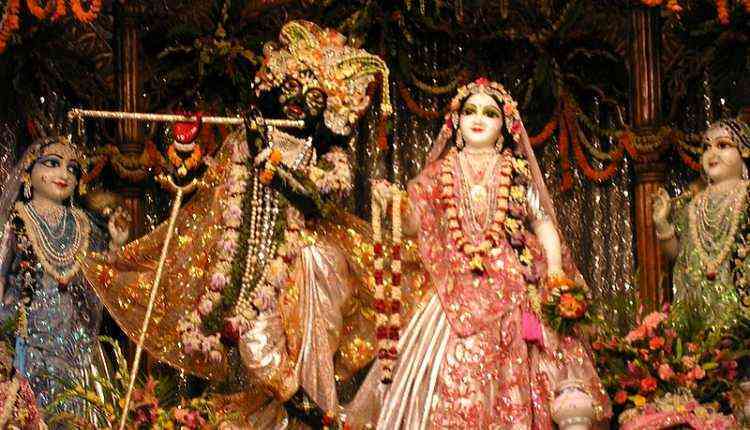
Shri Krishna Janmotsav is celebrated with great enthusiasm all over the country. This fast is called Vratraj. Of all the fasts, this fast is considered to be the best. According to the scriptures, Lord Krishna was born in Rohini Nakshatra on Ashtami Tithi. On this day, there was a Moon in Taurus and Sun in Leo. Therefore, the celebration of the birth of Shri Krishna is also celebrated during this period. People sing auspicious songs throughout the night and celebrate the birthday of Lord Krishna.
There is a fashionable statement in the Bhagavad Gita- “Whenever there is the improvement of evil and loss of religion, I will incarnate to eliminate evil and save goodness.” The festival of Janmashtami encourages goodwill and removes evil. This day, celebrated as a holy occasion, which is a festival of unity and faith.
On the day of Janmashtami, the Dahi-Handi competition is organized in many places in the country. Bal-Govinda of all places participates in the Dahi-Handi competition. A matki (clay container) filled with buttermilk, curd, etc. is hung in the sky, and an attempt is made to break the pot by the Bal-Govindas. The winning Bal-Govindas team, which succeeds in breaking the matki, deserves the reward.
15. Onam
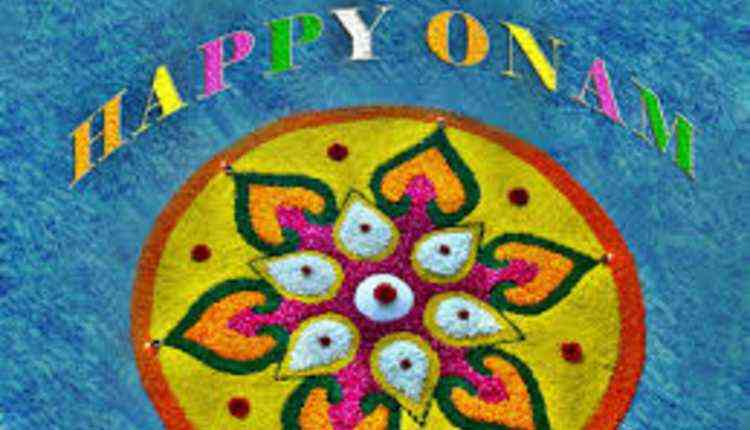
It is the largest festival of the year in the state of Kerala. It is made in honor of the arrival of the mythical King Mahabali. The festivities include the making of impressive flower tapestries, exquisite banquets, music, and snake boat regattas. The most striking thing is that elephants are included in their crowded processions.
Thousands of foreigners visit the region to be part of Onam, that’s why the Indian government-designated “Tourism Week” at this time.

